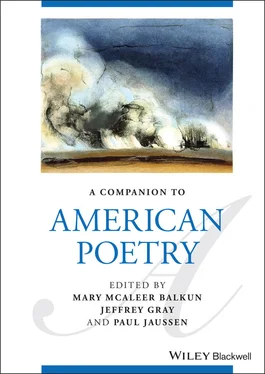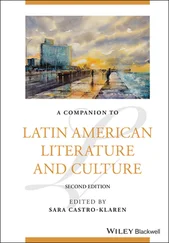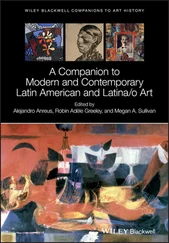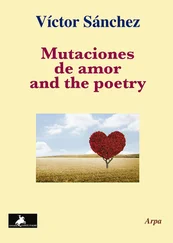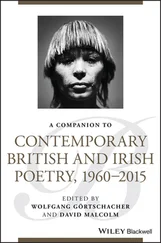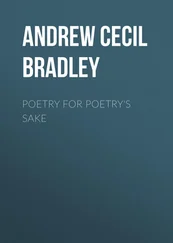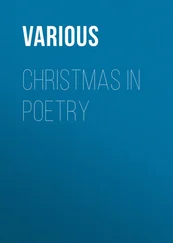And there the varying, mingling colors join;—
Yet her own Lawrence rolls his fertile tide
Through villas, smiling on his pastoral side
(Morton 1799, p.12)
This introduction to the frigid north then gives way to the Hudson River as the site of the Battle of Saratoga:
The voice of death the shivering forest fills,
And Hudson echoes from his hundred hills.—
Hudson! The lord of many a fateful hour,
With wild, impetuous, desolating power,
To the loud battle joins his clamorous flood,
And feeds his myriads with immortal blood.
(Morton 1799, p. 16)
Morton uses this movement through successive prospects to teach Euro-centric readers to value both the sublime aspects of the North American wilds and the mixed community that emerges there.
Phillips locates Morton’s “radical” rethinking of epic tradition in the prospects, proto-Romantic fragments, and intertexual connectedness working across her three long poems, all characteristics he identifies in other American epics of the period as well (2011, pp. 60–62). These characteristics help recenter the epic in local spaces and with respect to recent events while also drawing on and developing a greater use of fragments that “evokes and creates contexts if used deliberately” (Jung 2009, p. 16), in Morton’s case the reach and significance of the United States through episodes in its history. Just as importantly, Morton marks the difference between the unreliable histories of classical bards and her accounts of the present “Founded on Fact,” as the title page of The Virtues of Society proudly declares, by characterizing herself as a truth-telling “minstrel.” This is another engagement of folk traditions that, Phillips argues, modernizes epic while anticipating the authorial self-fashioning of Romantic poets (2011, p. 60). He continues, “The modern solution to the problem of rendering contemporary events epic, according to Morton, is to frame the telling of those events as more virtuous than the Iliad because they are more truthful” (Phillips 2011, p. 60).
Morton’s insistence that she recounts “ living efforts…Beyond the storied page of fabling fame” (1799, p. 5) recalls Bradstreet’s concern with lying Greeks; here too it signals a literary ambition that even a reader as astute as Phillips undervalues. While aligning Morton’s experiments with broad trends in the early American epic, Phillips hypothesizes that the intertextual experimentation of Morton and Phillis Wheatley suggests that “conceiving of the epic in pieces may be a particularly useful entry into the tradition for marginalized writers” (2011, p. 59). There may be some truth in this familiar consideration of the material conditions shaping a marginalized writer’s literary endeavors. It is a consideration invited by both Bradstreet and Morton themselves, as when Bradstreet adds to the end of her fourth monarchy, “No more I’le do sith I have suffer’d wrack,/Although my Monarchies their legs do lack” (Bradstreet 1678, p. 191), and Morton begs her readers to make allowances “from a consideration of my sex and situation” while hoping for “the partial eye of the patriot” (1790, p. viii). But too much emphasis on marginalization, particularly marginalization from formal education, may keep us from attending to the scholarly ambitions of these poems.
Just as Bradstreet follows Ralegh in stitching together a portrait of world history from the Assyrians to the Romans, Morton draws from similar works of history, as well as ethnography, art, and contemporary accounts of the American Revolution. Indeed, her early allusion in The Virtues of Society to Artemisia, “whom asian realms adored” (1799, p. 5), includes a footnote to An Universal History, from the earliest account of time (1747–1768), a massive, 65-volume attempt at totalizing history. Phillips attributes the use of “prospect” in early American epics not only to the influence of Paradise Lost but just as importantly to their frequent origins as commencement poems, which “tended to recycle the translatio studii/translatio imperii trope of George Berkeley’s often reprinted ‘Verses on the Prospect of Planting the Arts and Learning in America’” (2011, 42). That Morton’s movement from Artemisia to Ackland in the opening section of this poem follows this pattern while stressing her own scholarly judgment suggests that she may have knowingly modeled her work on commencement forms, just as Bradstreet drew on Ralegh’s use of citations. And just as we might see in Bradstreet’s representation of Semiramis an attempt to encompass the world that resonates with the poet’s own grand design, Morton signals her own intellectual accomplishments when she celebrates Ackland’s education and scientific knowledge of the world:
While to her tutor’d rhetoric was given
To point the stars, that gem the brow of heaven,
The plant’s quick growth, the mineral’s slow decay,
The electric torrent’s undulating way,
Or round the pictured orb instructive trace
Each varying zone, that tints the changeful face;
(Morton 1799, pp. 6–7)
While Morton emphasizes that her poem is more factual than her classical models, here she praises Harriet’s comprehension of the stars and earth as natural phenomena understood scientifically, not as embodiments of supernatural influence. This catalog of her education in astronomy, botany, minerology, and electicity culminates in a characterization of the globe in terms of “varying zone” that will then be more fully figured in Harriet’s movement through various prospects as she travels from east to west.
Paying attention to ambition, to how the world is understood and how the project of literary worldmaking is undertaken by a given poet, provides insight into these often difficult poems as well as grounds for comparison among women poets undertaking such projects. In particular, such comparisons make visible intellectual and literary endeavors to achieve a totalizing vision that exceeds national and political interests as well as personal experiences. That such visions are necessarily imperfect is often acknowledged by the poets and gives us another way of understanding their efforts as those of fallible humans rather than marginalized women. Poems as varied as Sor Juana Inés de la Cruz Primero Sueño (1997, pp. 77-129), Phillis Wheatley Peters’ “To a LADY on her coming to North-America with her Son, for the Recovery of her Health” (2011, pp. 41-42) and Elizabeth Graeme Fergusson’s “The Dream” (1768) explore the possibilities of goddess-eye points of view in ways that merit consideration as perspectives on the globe with reach beyond the personal and political occasions for those poems. Morton’s poetic representation of science and the globe differs significantly from Bradstreet’s early modern worldmaking. That said, both Morton and Bradstreet self-consciously engage in learned conjectures about the world in ways that resonate across time. Interestingly, both Semiramis and Harriet are represented as moving through imperial space, and the military endeavors with which they are associated ultimately fail—Semiramis at the Indus River and Harriet on the Hudson. Bradstreet and Morton may be similarly seen to fail, both in their understanding of the globe and world history and in the execution of long, ambitious poems. Bradstreet’s “Monarchies” reflect an imperfect understanding of the world that has to be approximated through judicious readings of classical and contemporary sources as well as an impossible personal ambition, not unlike that of the monarchs whose efforts she recounts. This also allows Bradstreet, as she follows Ralegh, to amass and judge evidence—world history is complex not only for its breadth and variety, but because interpretations are at odds with one another. While her elegies often signal that Bradstreet is putting forward a particularly Puritan or English view of the world, her “Monarchies” make visible that she is weighing the incomplete and incongruous opinions of others, something that she does throughout her quaternions as well. Morton is more successful in navigating the globe, albeit through epic fragments that stand in for a larger and not yet fully realized whole. Travel by river and sea (briny or brineless) links prospects that, taken together, limn a world that is understood through perception and learning. In the works of both, fragments and citations are intentional and ambitious, if not fully satisfactory, attempts to “make” the world. It is useful to recognize that ambition and failure are inseparable in all such attempts and that women writers undertaking world-spanning projects are, perhaps like Semiramis and Harriet Ackland, inevitably going to falter on the banks of one river or another.
Читать дальше
